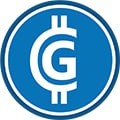Fed Rate Cut Hopes Dampen Amid Surging Q1 Inflation
0
1

The U.S. economy saw an unexpected slowdown in the first quarter of 2024, with the Gross Domestic Product (GDP) growing at just a 1.6% annualized rate. This rate is too far lower than the expected growth of 2.4%, as was predicted by the economists.
This deceleration is especially remarkable in view of the 3.4% of robust pace, which had been recorded in the previous quarter. Although earlier predictions had indicated that the economy was going to be stable, the actual numbers from the Commerce Department show otherwise.
This slowdown of the growth rate happens when the economy seemed to have been resilient to forecasts of a decline, a result of the Federal Reserve’s aggressive interest rate hikes to contain inflation. Preliminary analysis shows sectors such as government spending contracted and personal consumption failed to meet expectations, resulting in the overall slowdown.
Inflation Concerns Complicate Monetary Policy
However, during the same quarter, the inflation rate also surprisingly increased particularly in the Personal Consumption Expenditures (PCE) inflation measure. This subcomponent, important for Federal Reserve policy decisions, showed an increase that can influence the central bank’s stance on interest rate adjustments.
The hotter-than-expected PCE readings signal that inflation pressures are not subsiding as earlier anticipated, which complicates the outlook for the economy.
The increase in inflation is caused by some factors such as continued increases in services and some commodities’ prices. This persistence in inflation is in fact undermining the primary goal of the Federal Reserve to keep prices in check without at the same time suppressing economic growth.
Market Reactions and Expectations
After the economic data was released, financial markets responded quickly.` The S&P 500 futures indicated that markets would open lower, falling by 1.27% due to apprehensions of an economic slowdown amidst inflation.
In the bond market, the yield on the U.S. 10-year notes climbed to 4.721%, while the two-year yield moved to 5.012%, reflecting a change in the investor’s outlook on the period and magnitude of interest rate measures.
The currency markets also showed a slight increase in the U.S. dollar index by 0.113%, indicating that investors see the U.S. dollar as a safe asset in uncertain economic conditions.
Federal Reserve’s Policy Dilemma
The two-fold problem of slowing economic development and stubborn inflation poses a serious policy dilemma for the Federal Reserve. The expectation of a rate cut towards the end of the year is diminished by the looming need to deal with the inflationary pressures which do not seem to wane.
Consequently, these circumstances may require retaining, or sometimes increasing, rates in order to fight inflation, which is the opposite of earlier anticipated cuts.
The analysts are now looking up closely to the Federal Reserve’s further steps. The primary concern of the central bank is the inflation control, however, the unanticipated slowdown of the GDP increases the complexity of its decision-making. The Fed’s course of strategy in the forthcoming months would largely depend on the economic reports due soon, particularly those related to consumer prices and employment.
Read Also: Consensys Fights for Ethereum, Sues SEC to Block Regulation
The post Fed Rate Cut Hopes Dampen Amid Surging Q1 Inflation appeared first on CoinGape.
0
1







